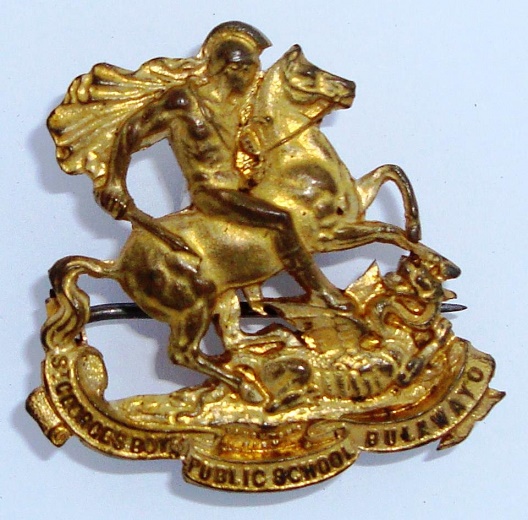St. George's School

St.George's in Slaisbury
St. George's College was founded in 1896 by a
French Jesuit, Fr. Marc Barthélemy, SJ, who opened the doors to a small
corrugated-iron, two-windowed hut to admit the first six pupils to
Bulawayo Boys' School in Bulawayo, the second largest city in Zimbabwe
(formerly Southern Rhodesia). The date was February 7th 1896 and the boys
were Leonard and Lancelot Makin, Hubert and William Halder, Edgar Rorke
and Otto Cooper.
The first assistant teacher was Father Nicot. In 1898 a more permanent
building was erected, and Father James Nesser joined the staff. In
December at the first prize-giving, the school assumed the title ‘St.
George’s Boys’ Public School’. The next year, Father Francis Johanny
joined the staff and the Cadet Corps was established. The first English
Jesuit, Father Thomas Gardner, joined the staff in 1902 and it was he
who was instrumental in establishing organised games like cricket and
soccer. 1902 was also the year that the first Rhodes scholarships were
awarded in Rhodesia (Zimbabwe) and they went to St. George’s boys Albert
Bisset and Woodford Gilbert. In 1912 the first permanent buildings were
completed and opened by Earl Grey.
In 1898, a permanent building was erected, and in December of that year,
at the first prize-giving ceremony, the school assumed the title St.
George's Boys' Public School. In 1899, Fr. Francis Johanny, SJ joined
the staff and set up the Cadet Corps. Three years later, Fr. Thomas
Gardner, SJ, the first English Jesuit arrived. In the same year, in
1902, the first Rhodes' Scholarships were awarded in Southern Rhodesia,
and they went to the St George's scholars: Albert Bisset and Woodford
Gilbert. In 1912, the first permanent buildings were completed and
opened by Earl Grey.
St. George's College moved to Salisbury (now Harare) in 1926. The
architect of the buildings was Fr. Louis Lebœuf, SJ; the main builder
was Br. John Conway, SJ. The Beit Hall was established in 1935 by Sir
Robert Stanley. In 1940, the Fr. Crehan Library was built, then the
Monastery, and later, the Priory. In 1955, the new Dormitory Wing and
Laboratories were built, and in 1973 the permanent Chapel was erected.
The school has a family-oriented approach to academic and
extracurricular studies; every student belonging to his own house. There
are four houses, identified by colour, and named after the prominent
Jesuits who were amongst the founding fathers of the school in Bulawayo:
Fr. Marc Barthélemy, SJ: first Rector (French, 1896–1913), Dark Green
Vests.
Fr. Thomas Gardner, SJ: first English Jesuit, an anthropologist and a
champion of the Cadets, Red Vests
Fr. Andrew Hartmann, SJ: chaplain to The Pioneer Column in 1890, Dark
Blue Vests.
Fr. Francis Johanny, SJ: second Rector in 1914, Yellow Vests.
The house system commenced in 1938 with only three houses: Barthélemy,
Gardner, and Hartmann. Johanny was created in 1983, as the number of
students gradually increased. Each scholar, referred to as a Saint's
boy, inherits the house of his previous relative (predecessor); 'new'
boys are allocated their houses on a random basis.